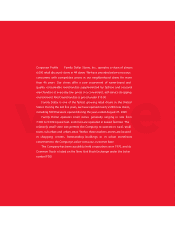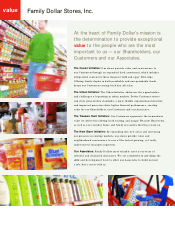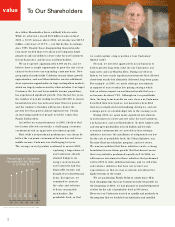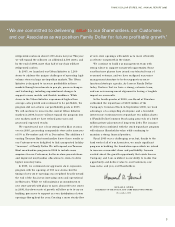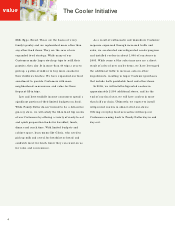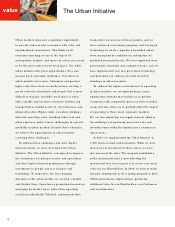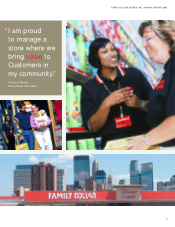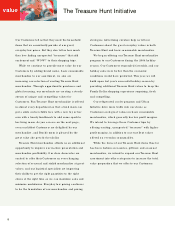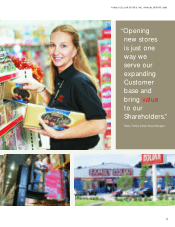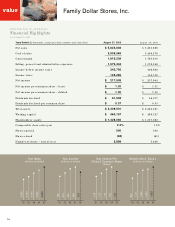Family Dollar 2005 Annual Report Download - page 8
Download and view the complete annual report
Please find page 8 of the 2005 Family Dollar annual report below. You can navigate through the pages in the report by either clicking on the pages listed below, or by using the keyword search tool below to find specific information within the annual report.
The Urban Initiative
value
6
Urban markets represent a significant opportunity
to pro vide under-served consumers with value and
neighborhood convenience. Two-thirds of all
consumer spending occurs in the largest 50
metropo litan markets, and inner city urban areas tend
to be the most under-served retail space. Yet, while
urban markets offer great o pportunities, they also
present great o perating challenges. Our sto res in
urban markets serve more Customers and produce
higher sales than stores in smaller towns, creating a
greater velocity of products and peo ple that is more
difficult to manage. Available retail space is often
older, smaller and has mo re restrictive delivery and
transportation conditio ns due to city ordinances and
physical location. Higher crime, inventory shrinkage
risks and operating co sts, including labo r, rent and
other expenses, make it more challenging to operate
pro fitably in urban markets. Despite these obstacles,
we believe the opportunities in urban markets
outweigh these challenges.
To address these challenges and drive higher
financial returns, we have developed the Urban
Initiative. The Urban Initiative is designed to improve
the co nsistency of custo mer service and operations
and drive higher financial performance through
investments in peo ple, process changes and
techno logy. To respo nd to the fast-changing
dynamics of the urban market, we created a mobile
and flexible Store Operations organization focused on
managing by market areas, rather than operating
each store individually. Talented, experienced store
teams drive our success in these markets, and we
have enhanced our training pro grams and leveraged
techno logy to create a pipeline of qualified urban
store management candidates in anticipation of
predicted perso nnel needs. We have impro ved store
presentation standards and customer service, and we
have implemented new loss preventio n technology
and pro cedures to address elevated inventory
shrinkage in urban locations.
To address the higher co sts inherent in o perating
in urban markets, we are implementing a price
optimizatio n strategy that enables us to provide
Customers with co mpetitive prices on their everyday
needs but also allows us to partially offset the impact
of operating in these mo re expensive markets.
We are also improving our supply chain to address
the challenges of producing increased sales and
inventory turns within the limited space common in
urban stores.
In 2005, we implemented the Urban Initiative in
1,200 stores in major urban markets. While we have
increased our investment in these stores, we have
also increased the sales. The marginal contributio n
of the incremental sales is now offsetting the
incremental co st, but our goal is to create even more
value for our Shareholders. In 2006, we plan to make
dynamic adjustments to the existing pro gram to drive
further perfo rmance improvement, pro ducing
additional value for o ur Shareho lders, o ur Customers
and o ur Associates.


